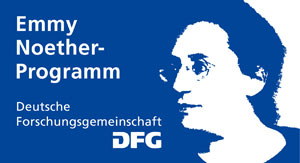Quantum Friction
Researchers:
J. Fiedler, N. Strauß, S. Y. Buhmann

Quantum friction is the velocity-dependent force between two polarizable objects in relative motion, resulting from quantum-fluctuation mediated transfer of energy and momentum. Due to its short-ranged nature it has proven difficult to observe.
Theoretical attempts to determine the velocity-dependence of the drag experienced by an atom moving parallel to a surface arrive at contradicting results. Scheel and Buhmann1 predict a force linear in relative velocity v by employing the quantum regression theorem (QRT). Intravaia2, however, predicts a v³ power-law starting from a non-equilibrium fluctuation-dissipation theorem (FDT).
This contradiction is brought along by a difference in the long-time behavior of correlations of the type <d(t)d(t')>, where d is the atomic dipole operator. The QRT approach assumes Markovianity and thus exponential decay of correlations, whereas the FDT formalism acknowledges a power-law behavior of that decay for very large times, but comes at the cost of being restricted to stationary systems.
On the theoretical side, we employ the time-convolutionless expansion (TCL) for probing Markovianity and subsequently follow the QRT route in order to study an atom flying towards a surface – an intrinsically non-stationary setup. We derive signatures of the relative motion in the atom’s decay rates and level shifts, calculate the friction experienced by the atom and compare both to results obtained from time-dependent perturbation theory.
Furthermore, we aim at designing a quantum-rotor experiment that measures quantum friction via the damping of rotationally highly excited diatomic molecules.



